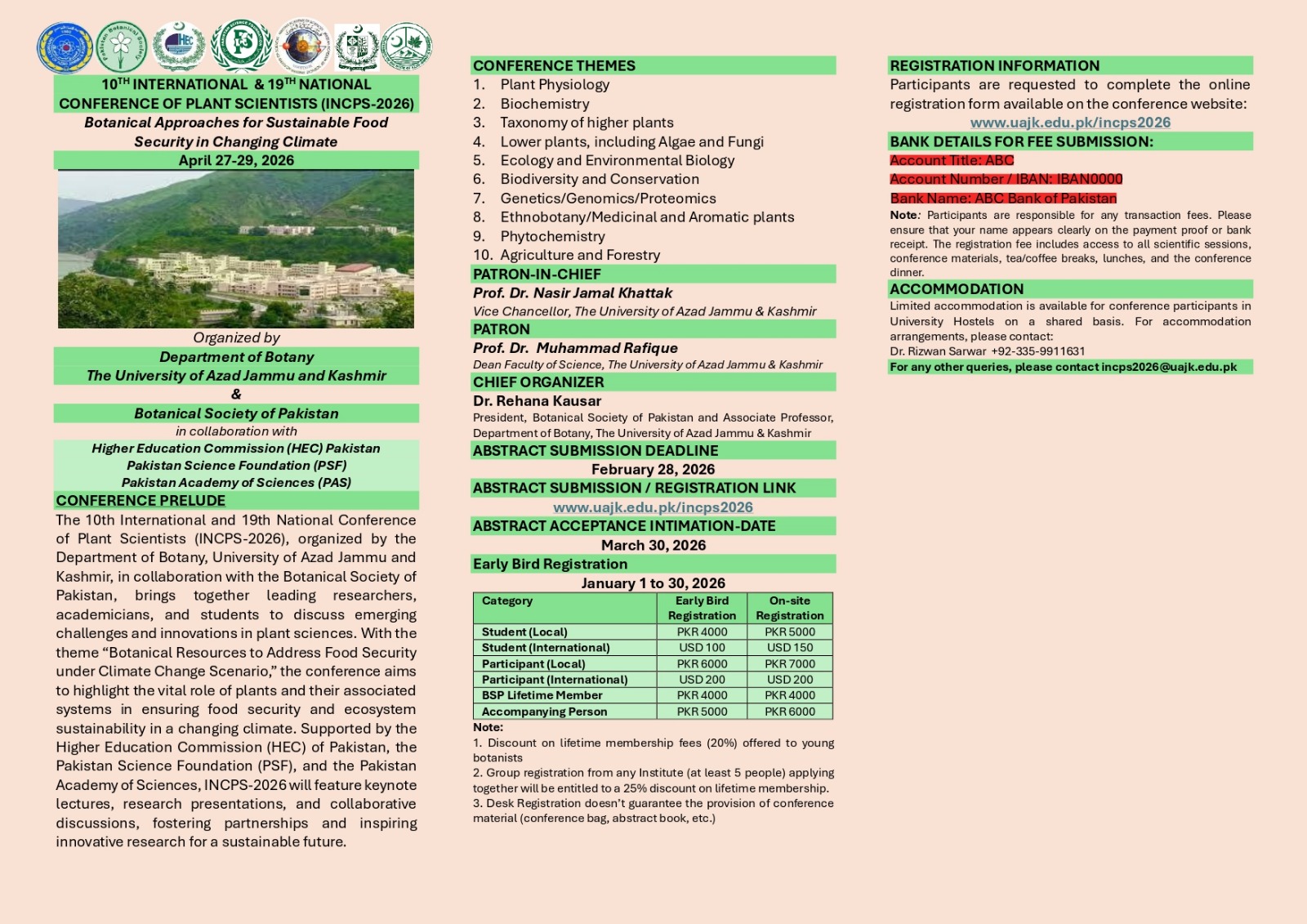
PJB-2014-257
ISOLATION AND CHARACTERIZATION OF NOVEL BACTERIA CONTAINING ACC DEAMINASE FROM THE RHIZOSPHERE RESOURCE ON DRY-FARMING LANDS
PENG ZHENG1, LIXIN ZHANG1*, LI TIAN1, LING ZHANG1, FUCAI CHEN1, BINGZHI LI2* AND ZHIYAN CUI1
Abstract
Soil-microbe-plant interactions are known to be intricate and they can greatly influence the crop vigor and yield. Plant growth promoting rhizobacteria (PGPR) containing ACC deaminase can markedly affect plant metabolic processes under stress conditions. In the present study, we isolated 300 bacterial strains from the rhizosphere of maize or apple grown in drought-hit soil including four different locations of the Loess Plateau, China. Of all isolated strains, four with ACC deaminase activity (ranging from 28.88 to 155.12 nmol alpha-ketobutyrate mg-1 h-1) were further studied by determining their biological characters and sequencing the 16S rRNA gene. All four strains showed positive performance in terms of arabinose, citrate utilization, urease, indol, glucose and melibiose. In connection with the results of biochemical characters and phylogenetic analysis, these strains commonly belong to three different genera: Klebsiella, Pseudomonas and Raoultella and four different species: Klebsiella oxytoca, Klebsiella variicola, Pseudomonas fluorescens and Raoultella planticola. Although some researchers have reported their performance under stress conditions, we are the first to report Klebsiella oxytoca, Klebsiella variicola and Raoultella planticola containing ACC deaminase under drought stress. These findings are a reasonable explanation to their superb ability of causing stress-resistance in maize (Zea mays) or apple (Malus domestica) plants. The presence of diverse PGPR possessing potential ACC deaminase activity may be beneficial for enhancing crop production under different stress conditions.
To Cite this article:
Download PDF

